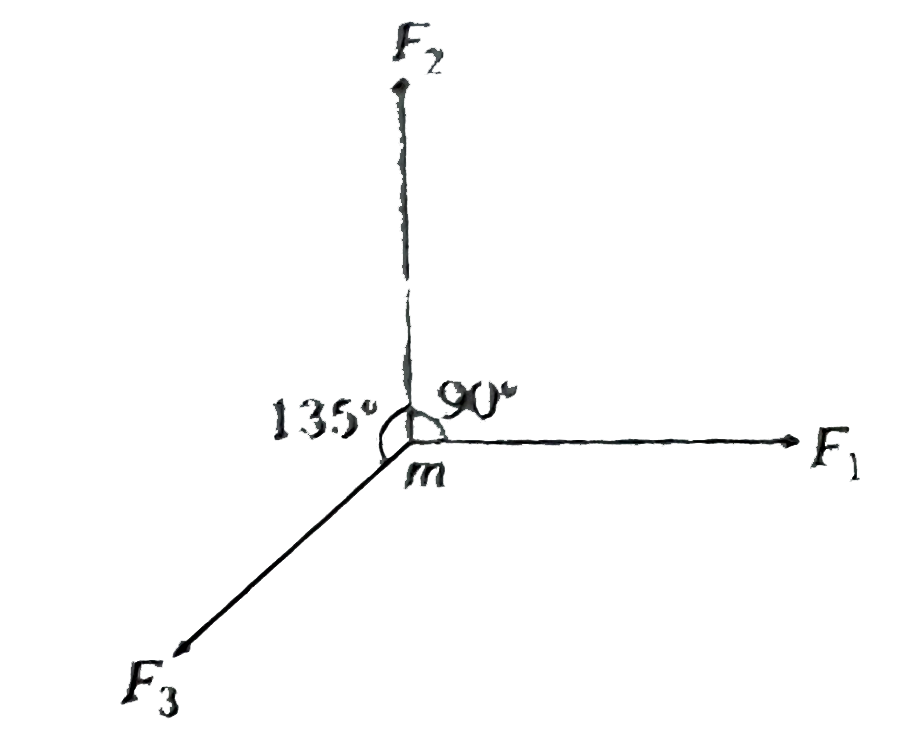A force of 10 N acts on a body of mass 5 kg. Find the acceleration produced.
To solve the problem, we will use Newton's second law of motion, which states that the force acting on an object is equal to the mass of the object multiplied by the acceleration of the object. The formula can be expressed as:
F=m⋅a
Where:
- F is the force applied (in Newtons),
- m is the mass of the object (in kilograms),
- a is the acceleration (in meters per second squared).
1. Identify the Given Values:
- Force F=10N
- Mass m=5kg
2. Rearrange the Formula to Solve for Acceleration:
- We need to find acceleration a. From the formula F=m⋅a, we can rearrange it to:
a=Fm
3. Substitute the Given Values into the Formula:
- Now, substitute the values of force and mass into the rearranged formula:
a=10N5kg
4. Calculate the Acceleration:
- Perform the division:
a=2m/s2
5. State the Final Answer:
- The acceleration produced is 2m/s2.
Final Answer:
If a force of 10 N acts on a body of mass 5 kg, the acceleration produced will be 2m/s2.
- F is the force applied (in Newtons),
- m is the mass of the object (in kilograms),
- a is the acceleration (in meters per second squared).
- Force F=10N
- Mass m=5kg
- We need to find acceleration a. From the formula F=m⋅a, we can rearrange it to:
a=Fm
- Now, substitute the values of force and mass into the rearranged formula:
a=10N5kg
- Perform the division:
a=2m/s2
- The acceleration produced is 2m/s2.
If a force of 10 N acts on a body of mass 5 kg, the acceleration produced will be 2m/s2.
Topper's Solved these Questions
- BOOK - ICSECHAPTER - LAWS OF MOTIONEXERCISE - EXERCISE - 3(D)17videos
LAWS OF MOTION
- BOOK - ICSECHAPTER - LAWS OF MOTIONEXERCISE - EXERCISE - 3(D) (Mutliple Choice type)2videos
LAWS OF MOTION
- BOOK - ICSECHAPTER - LAWS OF MOTIONEXERCISE - EXERCISE - 3(C) Multiple Choice type4videos
LAWS OF MOTION
- BOOK - ICSECHAPTER - ICSE ANNUAL EXAMINATION -2020EXERCISE - SECTION-II45videos
ICSE ANNUAL EXAMINATION -2020
- BOOK - ICSECHAPTER - LIGHTEXERCISE - TOPIC 2 Spherical Mirrors (4 Marks Questions )9videos
LIGHT
Similar Questions
A force of 15 N acts on a body of mass 2 kg. Calculate the acceleration produced.
View SolutionA force of 15 N acts on a body of mass 2 kg. Calculate the acceleration produced.
View SolutionA force of 20 N acts on a body of mass 5kg at rest. What is the acceleration of the body? What is its velocity after 5 seconds if the same force acts? After 5 seconds if the force ceases to act how will the body move?
View SolutionWhen a force F acts on a body of mass m the acceleration product in the body is a . If three equal forces F1=F2=F3=F act on the same body as shown in figure the acceleration produced is
 View Solution
View SolutionA force of 10 N acts on a body of mass 0.5 kg for 0.25s starting from rest.What is its momentum now?
View SolutionWhen a force F acs on a body of mass m the acceleration product in the body is a . If htree equal forces F1=F2=F3=F act on the same body as shown in figure the accleration produced is
 View Solution
View SolutionA force of 10 N acts on a body of mass 2 kg for 3s , initially at rest. Calculate change in momentum of the body.
View SolutionA force of 10 N acts on a body of mass 2 kg for 3s , initially at rest. Calculate the velocity acquired by the body
View SolutionA body of mass 20 kg is kept initially at rest. A force of 80 N is applied on the body then the acceleration produced in the body is 3m/s2, force of friction acting on the body is :
View SolutionA constant retarding force of 20 N acts on a body of mass 5 kg moving initially with a speed of 10 ms−1. How long does the body take to stop?
View Solution

